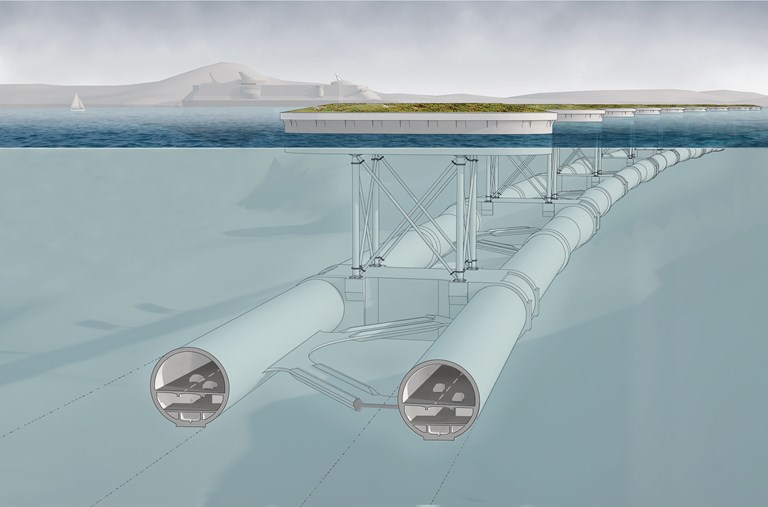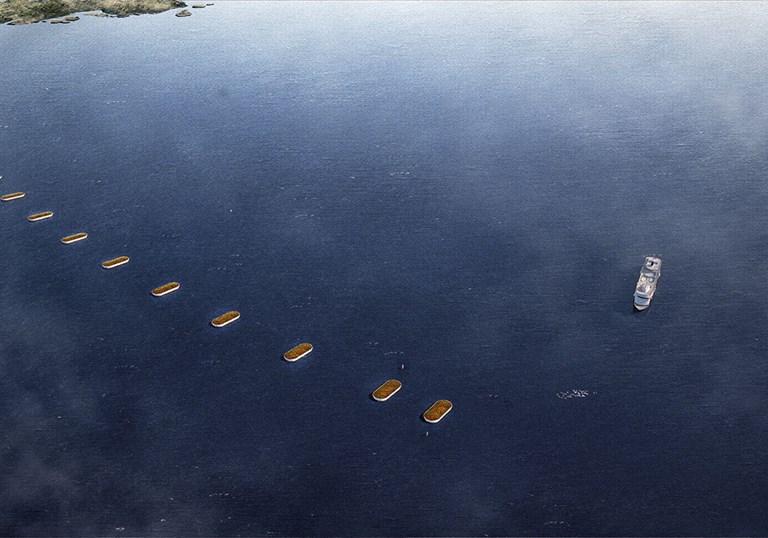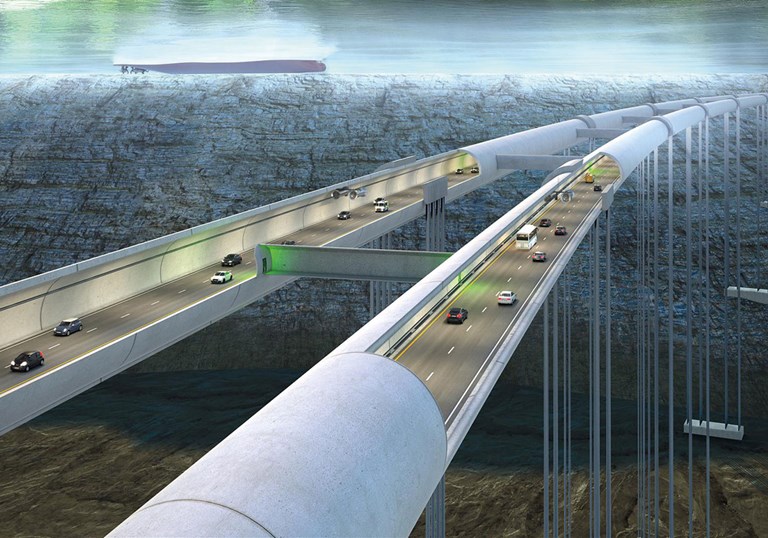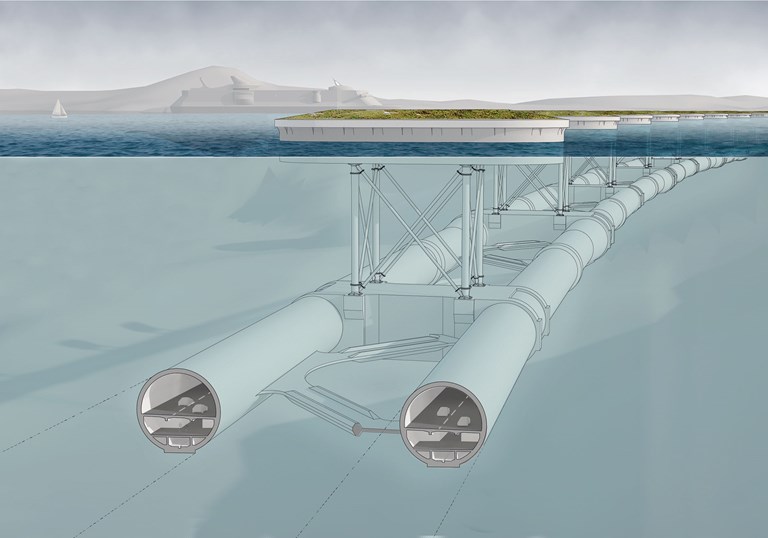
The bridge that exists, yet is not seen
Norwegians have been a race of intrepid navigators ever since the time of the Vikings. The necessity to be so then and still today is dictated by the immense fjords that plunge into the North Sea. Instead of climbing lofty peaks, it is much easier to part the waves to cross from one side to the other. This familiarity with sea water, explains why over the last couple of years Norway has invested in the construction of tubular floating bridges below sea level. Engineering jargon refers to them as Archimedes’ bridges and the person leading the research is a female engineer hailing from a freshwater city not far from Ticino – Como. Her name is Arianna Minoretti and she works for Statens vegvesen, Norway’s public roads administrator, and lives in Trondheim, the third largest city of this Scandinavian country. We conducted an interview with her for Bistrôt.

First of all, what is an Archimedes’ bridge?
“It is a tubular structure for the transit of vehicles that is positioned under the surface of the water in order to connect two opposite shorelines. It may cross a stretch of sea or lake, and it uses the famous Archimedes’ principal. We can describe it as a submerged floating tube bridge. It doesn’t sink because it receives an upward push from the liquid in which it is immersed, the same per intensity as the weight of the volume of the displaced liquid”.
Do Archimedes’ bridges already exist?
“They are not a new idea, as they were designed at the end of the 1800s but have never been built as the necessary technology was not available”.
Is it available now?
“Yes, the technology has been around for approximately 40 years. Capitalizing on investments made in research to anchor petroleum platforms to the seabed, there have been developments in technology that allow us to plan and build an Archimedes’ bridge safely”.
But so far, you’re only at the feasibility-study stage.
“Yes. There are no concrete projects underway as yet. Norway, however, is at the forefront of these studies as we have already conducted research and testing to connect the banks of some fjords via these Archimedes’ bridges with a view to redefining the E39”.
What is the E39?
“It is a 1,100-kilometer-long European highway that runs from Trondheim in Norway, following the coastline, and ends in Aalborg, Denmark. The majority of Norway’s freight traffic uses this North-South route, but at certain points the journey is winding and arduous, and along the way there are various ferry crossings from one fjord to another. This is why Norway has been working for some time on a project to find alternative connection solutions. Archimedes’ bridges figure among the possible contenders”.
What is your role in this project?
“I’m head engineer, responsible for the feasibility studies into an Archimedes’ bridge along the E39”.
How did you get involved in this project?
“In 2013 my husband, a professor who was a researcher at the time, got a job at a Norwegian university. As I was self-employed in Italy, at the end of 2013 I began to look for employment in Norway. I applied for a job advertised in Norwegian public administration, they were looking for an engineer with experience in the design of reinforced concrete structures. I had that experience and was hired in 2014”.
Let’s return to technicalities. At what depth is the bridge positioned?
“At approximately twenty meters from the surface, but it is possible to cross seabed even hundreds of meters deep”.
How long can an Archimedes’
bridge be?
“It depends. Up to a few hundred meters the bridge does not need anchorage or particular support, but for longer distances it is possible to build one tens of kilometers long, provided there are pillars or vertical stabilizing elements in place”.
What is the diameter of the tunnel and the construction material?
“This also depends on the use intended for the tunnel: road traffic only or railway as well. The project we have designed here in Norway would have two separate tubes and a diameter of 12.5 meters. The structure would be in reinforced concrete”.
What is the cost of an Archimedes’ bridge?
“There are quite a few variables. In general, this type of bridge has the advantage of costs remaining stable regardless of the length, whereas the cost of other bridges increases with length. If we apply the proposed technology for the Norwegian fjords, for example Bjørnafjord, a reference figure could be 600,000 Euro (editor’s note: approximately 650,000 Swiss Francs) per linear meter. However, in the absence of central elements, the cost could be reduced to 170,000 Euro per linear meter, as in the design proposed for the Digernessundet”.
So are we talking about investments in the billions? Are they likely to ever come to fruition?
“Yes. We have studied scenarios for three connections in three different fjords. In one case, due to the Covid-19 situation and the resulting world economic crisis, the project has been postponed. In another, an already-tried-and-tested floating bridge option has been decided, and in the third case, Sulafjord, we are awaiting the outcome of the decision. The distance to be covered would be over four kilometers, and we consider our proposal to be a valid solution”.
What are the advantages of this engineering solution?
“First of all, there is no impact on the landscape, and it can’t be seen from the mainland. Moreover, while floating bridges have to be closed in very rough seas, closures of Archimedes’ bridges are envisaged only in extreme conditions, normally you can’t feel any swaying. This is because bridges above the surface of the water are exposed to environmental load factors, that can be partially reduced if the structure is immersed in water. We are also carrying out a whole series of specific tests against fire and explosions, which are stress loads that we normally calculate at the design stage”.
Have you also studied the impact on plant and animal marine life?
“This requires a case-by-case analysis. The ecosystem must be studied at a certain depth, and this changes according to area, as it depends on the type of sea or lake, the currents, and temperatures. An in-depth study is definitely required for each specific application. In any case we are already aware of some general recommendations to apply, for example concerning the reduction of impact during the construction phase”.
Do you know about any other international projects for Archimedes’ bridges?
“Ever since the 1960s there have been proposals put forward for lakes such as Como, Lugano or Geneva, but they have never had the right technology. Now there are ongoing studies for Archimedes’ bridges in various places of the world, like, for example, in South Korea, or for the Red Sea. The International Federation for Structural Concrete (Fib) will shortly publish the first guidelines for this type of infrastructure project - a document written by an international group of experts, which I had the honor of coordinating”.
When will we be able to drive through an Archimedes’ bridge?
“It’s difficult to say. The technology exists, we have done all the tests and studies. Now it depends on political choices. In some cases, they may be reluctant to invest in an innovative project that has never been tried before, when there are available alternatives. We will see”.
Without doubt the first of these structures to be built will be a trailblazer for many other possible applications and will open up a whole new market for the construction and pre-fabrication industry. “It could be that the first one is built to cross the Straits of Messina...”, Minoretti comments, mindful of the fact that an English architect had already proposed a similar solution for crossing the whirlpools of Scylla and Charybdis. After all, the good Archimedes was a Greek from Syracuse, and if names have destinies, then the first bridge inspired by his principle should take shape in his homeland: Sicily.





